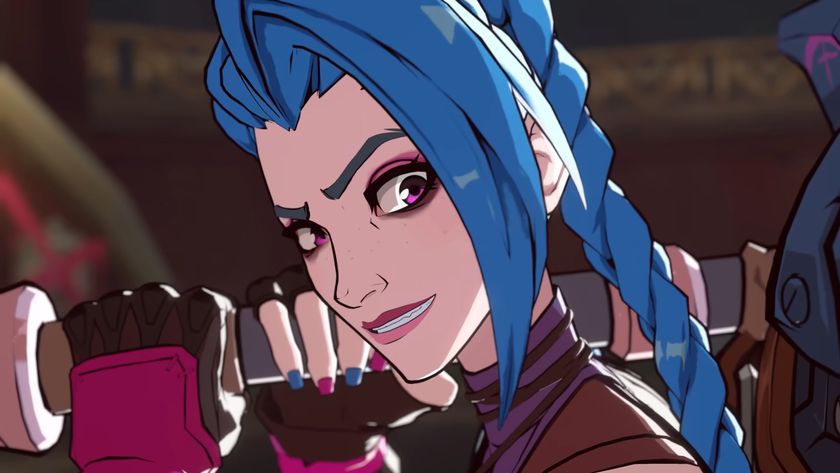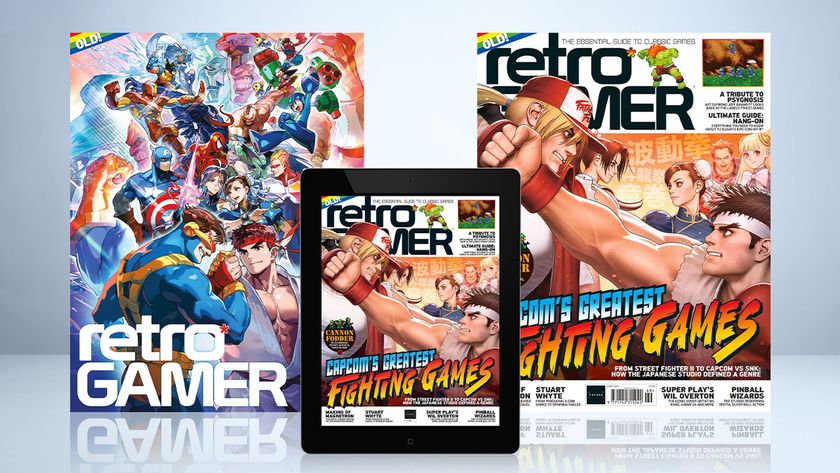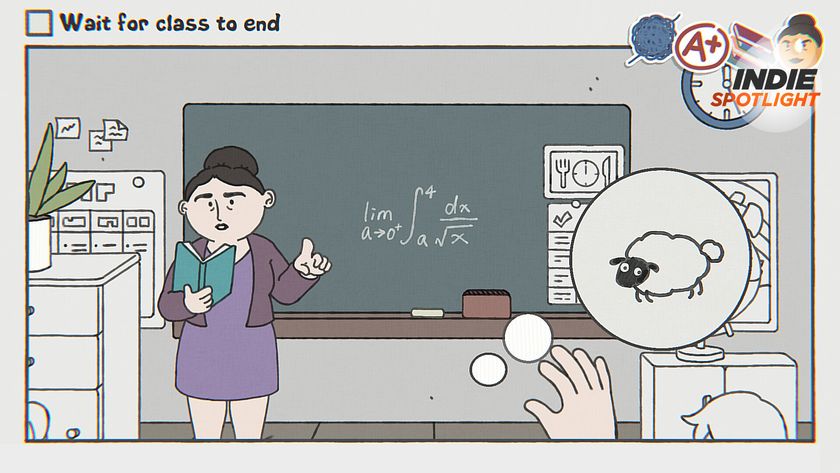Super Street Fighter IV 3DS - interview with Yoshi Ono
The father of SFIV talks 3D, AE, NGP, DLC and other exciting abbreviations
After lengthy hands-on time with the entire 3DS launch lineup, no game impressed us quite as much as Super Street Fighter IV 3D Edition. Sure the 3D effect is superfluous, but when it comes to fluidity, visuals and (for the most part) controls, this handheldversion does an impressive job of cramming it all onto one tiny card. We recently had a chance to chat with Yoshi Ono, Capcom's general manager of R&D and all-around father of Street Fighter IV, about this latest version as well as possible plans for the future.
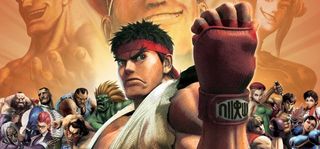
GamesRadar: Were you surprised when you first saw Super Street Fighter IV running on the 3DS? Did you think the machine was capable of such a visually accurate conversion?
Ono: The first time I had any kind of contact with the 3DS was shortly before E3 of last year. A couple of weeks before the show I got a call from [Capcom producer] Takeuchi-san, and he said he had something he wanted me to see. So I traveled to Osaka, and he whipped out a 3DS, and it was running a version of Resident Evil 5! And yes I was surprised we could get this kind of power in the palm of your hand, and 3D to boot.
It was almost time for me to go on vacation, part of Japan’s Golden Week series of holidays, but I was inspired to do something new. We started experimenting with the 3DS, threw together a quick build of SSFIV in a couple of weeks and invited Nintendo to come see it. They liked what they saw so much that they wanted to show it at E3 – I wasn’t really feeling that because it wasn’t terribly stable at the time, though I did give them a couple of screens and permission to talk about the game. But yeah, it was very surprising, just how powerful this little machine is.
GamesRadar: You’ve said this version, with its 3D graphics, StreetPass figurine sharing and other WiFi capabilities, is only possible on 3DS. Minus the 3D, is there anything here that couldn’t have been done on PSP?
Ono: I haven’t played a PSP game in a while, so I can’t talk specifics. I’m not terribly familiar with exactly what that machine is capable of. I can say, after speaking to others working in PSP development, the 3DS is eminently easier to develop for, and that’s really uncommon for a brand new machine. In the early stages, usually the tools you get aren’t great, the APIs are half broken etc. This time around, Nintendo’s done a fantastic job with that. We got this looking, essentially, like its big brother versions in a short period of time. In that sense it’s different than any other system, handheld or otherwise.
If you look at the features in SSFIV3D, we’ve pretty much gone through the checklist of what Nintendo wants to say about this new hardware. We’ve ported a game that gives you full console experience. The 3D’s looking really good, there’s WiFi play against other people, you can close it and walk around with it in your pocket to use StreetPass for figurine fighting, there’s a messaging system that updates even while the system is charging… we’ve pretty much covered all the bullet points and done it all in a very short development time. The fact we were able to pull all of that off in such a timeframe definitely speaks to the hardware.
Sign up to the 12DOVE Newsletter
Weekly digests, tales from the communities you love, and more
GamesRadar: There’s an over-the-shoulder 3D view in the game, meant to show off the screen’s depth. Were there any other angles or ideas you experimented with before settling on that?
Ono: It actually wasn’t that long of a process to figure that out. Early on we’d narrowed it down to the standard camera angle and this ¾ view, mainly because it is a fighting game and there are only so many angles that would make any sense at all.It made sense to look at it from a casual user’s point of view. We wanted this game to be very inviting to them, and we thought it would show off the 3D effects really nicely if we tilted the camera just a hair. And we knew that lapsed players who’re coming back to the series would most likely choose Ryu or Ken, and that angle really suits them, given their move set. Not a whole lot of people coming back after 15 yearsare going to pick Zangief on their first try, and that angle doesn’t work so well with him. But we wanted to have something in there to appeal to people who aren’t yet familiar with the game or the hardware, and it gives you a good idea of how the 3D works.
GamesRadar: You said earlier the 3DS allows for console-quality porting, but were there any smaller, maybe imperceptible sacrifices you had to make under the hood to get it running?
Ono: There are a couple of things we did that could be called compromises, or techniques we used to make certain things easier to do. One is the facial expressions of the characters as they perform or get hit by Ultra Combos. On the home systems this is done through animation and the polygon bone structure of the face. On 3DS we quickly substitute out a different model of the face, one with a different expression on it. If you played it on a 60-inch TV you might notice, but not really on the small screen. It also did free us up to simplify the models and make the game move even faster.
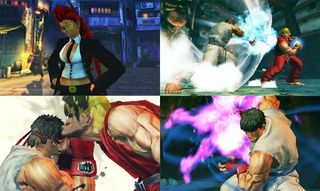
The other thing is less a compromise and more something we had to do given the 3D nature of the hardware. We never really needed to think too much about the actual relative distance in the backgrounds because the games were always 2D. On 3DS, the development tools can, to a certain degree, read the Y axis and automatically tell where things are supposed to be in 3D space, but we still needed to fine tune them. Sometimes things would overlap, something you intended to be behind is now closer, that sort of thing. There was a lot of fine tuning that had to be done. Not really a compromise, just part of the of the development process.
Not to brag, but with Super Street Fighter IV and Resident Evil: The Mercenaries 3D, we’ve done a particularly good job of using the 3D depth, and that’s because we’ve done so much fine tuning. A lot of other games [seen at the New York 3DS event], I don’t want to name names or anything, it still looks like they haven’t necessarily done those last stage fine tuning things. The way we’ve done it, no matter where you position that slider, it’s going to look appropriately 3D. Not at all the games in their current state - surely later it’ll be a different story - necessarily look as good as how we’ve pulled it off.
A fomer Executive Editor at GamesRadar, Brett also contributed content to many other Future gaming publications including Nintendo Power, PC Gamer and Official Xbox Magazine. Brett has worked at Capcom in several senior roles, is an experienced podcaster, and now works as a Senior Manager of Content Communications at PlayStation SIE.
Most Popular





